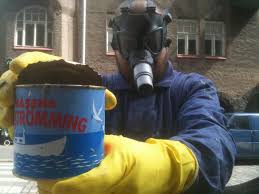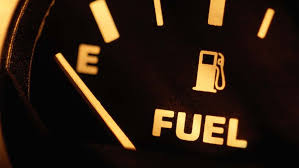 I once knew a bloke who played “chicken” with his fuel supply. He would not fill up until the tank was nearly empty. It was his defining quirk. It was how he played destiny. On one occasion when he was completely out of fuel, he had to roll down a hill where fortunately at the foot was a service station. However, he was always proud when he had less than five kilometres worth in the tank, before he filled it.
I once knew a bloke who played “chicken” with his fuel supply. He would not fill up until the tank was nearly empty. It was his defining quirk. It was how he played destiny. On one occasion when he was completely out of fuel, he had to roll down a hill where fortunately at the foot was a service station. However, he was always proud when he had less than five kilometres worth in the tank, before he filled it.
I only remember apparently running out of fuel in a vehicle which we were lent over the weekend. We were somewhere between Cloncurry and Normanton, and the engine just died. We flagged down a couple of blokes. They had a quick look, reached under the dashboard and turned the switch so that the second tank came on line. They looked at us and laughed good naturally. We felt like chumps, but nobody had told us about the second tank. “Come on, we thought you knew about such things; you’ve worked in the country.” Rejoinder was pointless.
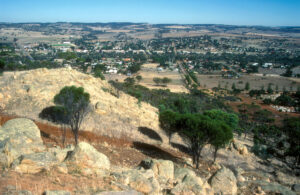
The places mentioned in this following anecdote are all in Western Australia, for those trying to put the names into a British Isles context. This other time involved being in a hired car somewhere in the bush about 100 kilometres from Perth. It was a Sunday evening and we were hoping to make York. Suddenly the fuel gauge plummeted to zero, and the nearest township – a speck on the map was Beverley. It was about 20 kilometres away by our calculation. Never has 20 kilometres caused so much angst. Then, when we reached Beverley, the place was closed. The service station was closed; and we knocked on a nearby door to find out where the owner was and whether we could get him out to open up the station. The people were bemused by these two strangers looking for petrol on a Sunday evening, Nevertheless, they were able to direct us to a place round the corner where the owner of the service station was tinkering with a car. And that was that. He was obliging; went and unlocked his garage /service station. Nevertheless, it was one of those regions of Australia, where the expectation of having a service station available at all hours just did not exist. After we reached York and booked into the motel, we had first trusted the fuel gauge and believed there was a convenient place to fill up. Negative, on both accounts.
Welcome to the new world of the EV and the charging point. At least once the petrol started flowing, it did not take much time to fill up. Thus the fact that the weather was freezing, only made the thought of waiting an hour to charge, another hurdle to overcome in the introduction of convenient EV charging – and being caught in a similar situation as then.
The enigmatic Ardern
Over this period, politicians have lost the confidence of the public. Camelot never existed, and the raft of exposés have portrayed Kennedy as less than the Camelot myth. But the important point is missed – in those years from his inauguration in 1961 to his death in 1963 – to me and many others he could be summed up in one word – a paragon.

Now I am an old man, and seeing this woman, the Prime Minister of New Zealand, she is the first politician since Kennedy to cause me to believe, perhaps that to me she is an exemplar against the fear and loathing that has characterised so much of what passes for political debate. I, like many, am just frustrated by the low level of debate. There is no longer any consideration in this Me All The Time rent-seeking political crop for policy discussion.
Yet Jacinda Ardern gives me hope. Her words – her demeanour of grace, compassion, resolve, her ability to call out the bully – the courage of making herself a target for all the “unspeakables”. She is indeed a paragon.
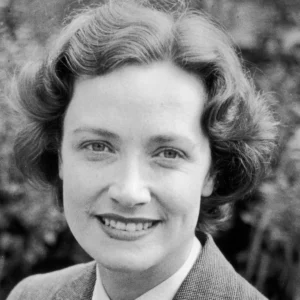
As I write, bursting forth from somewhere at the back of the house is the glorious contralto voice of Kathleen Ferrier singing Edward Elgar’s “Sea Pictures”, the evocative study of the beauty that is the blue waters of the planet set to music. Her voice soaring perfection – contralto being a difficult female singing voice to weave such an intricate vocal artistry, for I am tone deaf and yet this voice I can convert to visual interpretations of what she is communicating. Her voice is the water – so deep that the colour is caught between indigo and blue.

Hearing Elgar prompted me to turn to Elgar’s Cello Concerto, and the marvellous interpretation by Jacqueline du Pré. Her command of the cello; her embrace of it; her facial expressions; the interaction with the woodwinds; her bow work; her finger work; even being able to brush an errant hair away from her face. This woman had that ethereal air, so in keeping with the mood of the Concerto – the powerful entry of the cello urging the orchestra to engage, being an index of Elgar’s genius and du Pré’s interpretation
Then I played the most popular of the Elgar Enigma variations – Nimrod. It is often associated with majesty and death, but as one correspondent wrote, this piece is music coded to life. The slow majesty of birth, rising to a crescendo in life’s prime and gradually, but descending to a farewell of a life well lived. But there are many ways of saying farewell.
To me the wide smiling face encased by long dark hair – a face that has for five years been that of New Zealand still exists– not a Māori warrior nor an All Black forward replete with scars and cauliflower ears, but a compassionate women who can inspire a generation and yet, being the object of their infection, she has flushed out the purulent elements, the shameful abscessed underbelly of New Zealand in need of complete excision. Jacinda has exposed it, but she has called time out and it is up to others to complete the surgery. Otherwise, a diseased body exists no matter how much neoliberal balm you apply, there will be no cure. Except for the ongoing Enigma which is Jacinda Ardern to return.
In my first blog in March 2019, I wrote about Prime Minister Ardern. I was surprised by the toxic response from some quarters as if I was beatifying her. At a time when role models are scarce, especially in politics, I took the positive route which by and large has been verified given the difficult period through which she governed. After all, when I made the initial assessment, it was when the COVID-19 epidemic was just an oddity growing up in a Chinese city wet market.
Where have all the Horse Troughs Gone?
One of the questions that has arisen is when to replace our car with an Electric Vehicle (EV). Up until a few years ago, we ran two cars, both diesel. Then we sold one. We like Citroens, and have owned various combinations of C3, C4 and C5. The size of the car we have bought depends on not only the cost of the vehicle and the cost to run but also the dimensions of our garage given that in both Melbourne and Sydney we are lucky to have single car garages; but let us say that the Sydney one is compact. There is no way we could get one of those off-road tanks into it – or, for that matter any of the big cars. Only having a dextrous driver were we able to park the C5 in the Sydney garage. We currently own a C4.
From reports, the Sydney to Melbourne drive is still a nightmare for EV drivers, takes longer and the anxiety levels of those driving fearing that they will run out of charge, is frankly not worth it. For those who want to puddle around the suburbs, then probably the EV is the horseless carriage of choice.
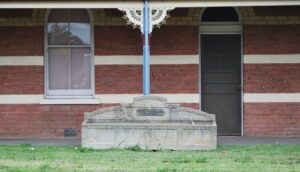
When the horseless carriage arrived in the late nineteenth century, there was no organised distribution of petrol and there was a need to crank the engine to generate the ignition spark. The Stanley Steamers as the rival, were expensive. They took a good amount of time to come up to temperature, needed condensers – devices that took the steam after it did its work, cooled and condensed it back into water, and recycled it for further use in the steam engine. Without a condenser, a Stanley Steamer consumed about a gallon of water per mile, so the car could travel no more than 30 to 50 miles before the car’s operator had to stop and refill the water tank from the local horse trough. Once the ignition problem was sorted so starting the internal combustion engine became reliable and swift, then the demise of the Steamer was sealed.
What car owners are used to is the convenience of being able to refuel. This ease of refuelling developed side by side with growth of the number of cars. Initially, petrol was available from the general store, filling from a barrel, and then the pump was introduced with an attendant to pump the fuel into a reservoir and then release it into the car’s petrol tank. I remember these solitary pumps outside the country town general store. It was not until 1913 in the USA, that the first dedicated “gas station” was opened; by the mid 1920’s there were 90,000 of them, and ten years later 200,000.
In Australia, development was slower. The same level of data as held In USA seems not to exist. In Victoria, for instance, by 1923 pumps were permitted at those city motor businesses concentrated in Elizabeth Street, though barred from many other central streets. Traditional selling of petrol in four-gallon tins at hardware outlets, cycle shops, grocers and blacksmiths was effectively ended in 1925. Growing municipal concern over the safety of kerbside pumps was a factor in the development of drive-in service stations, the first of which were constructed in suburban Malvern and Prahran in 1926. There was thus a lag, as is occurring in providing the appropriate environment for EVs to have the same certainty for access to an ultra-fast charging outlet as we currently have to a petrol and diesel outlet.
An interesting piece appeared a few weeks ago in the Boston Globe and I have taken the liberty of editing it, but hopefully retain the useful observations, which may be germane to future Australian experience describing the trip through New England. The various destinations seem to be doughnut outlets somewhat irrelevant in Australia to the efficacy of EV travel itself – because leaf-peeper season was over, we made round confections the driving force behind our drive.
As the writer wrote: To test the current state of EV infrastructure, we took off on a 400-mile road trip across New England in two typical — but quite different — electric cars. One of us (Aaron) drove a Kia Niro EV purchased a year ago while the other (Sabrina) rented the flashy Tesla Model 3 Performance.
The Niro costs about $40,000, has an EPA-rated range of 240 miles, and looks and drives like an ordinary car. The Tesla Model 3 Performance costs nearly $60,000, has an EPA range of more than 300 miles, goes zero to 60 miles per hour, which is comparable to the conventional sports car.
At a time when EV purchases are on the rise, our question was simple: Are there enough chargers around to make this a realistic choice for long-distance rides?

This journey started in Portland Maine. We started the day bright and early in Portland in Maine, at Holy Donut on Commercial Street, home of the gourmet potato doughnut. The dark chocolate sea salt did not disappoint: moist, rich, and just the right touch of salt.
There’s one big adjustment to owning an electric car: EV drivers cannot rely on the century-old ecosystem of a gas station around every corner. Instead, they need to plan their trips based on the availability of a growing but still spotty network of charging stations. Tesla has built its own network of widespread and speedy chargers but, at least for now, they’re only accessible to Tesla EVs.
A reliable and accessible charging infrastructure is critical if the region wants to successfully entice millions of car owners to make the switch to electric and slash climate-warming emissions. After all, drivers aren’t likely to ditch their gas vehicle if they’re going to have to worry constantly about running out of charge.
Given Tesla’s charging network advantage, we expected the Kia would have more issues on the road — and we were right. But neither one of us ever came close to running out of power as we enjoyed a perfect day and some nearly perfect doughnuts.
Unlike road-tripping in a regular car, we knew we needed to do some advance planning to make sure we were near chargers when our EVs’ batteries ran down. We used an EV-specific app called A Better Route Planner, or ABRP, to map our journey. After a few seconds, the app spat out recommended routes, complete with charging stops along the way.
For the Tesla, using the app wasn’t strictly necessary, as the car’s built-in navigation app can plan routes with stops at the company’s Supercharger stations.
On the other hand, even using ABRP doesn’t solve all challenges for non-Tesla drivers, because some areas lack adequate charging. On Cape Cod, for example, there is only a single fast-charging station with two connections, located in Hyannis. Tesla has four stations spread over the Cape, with a total of 42 connections. In Maine, Massachusetts, and New Hampshire, Tesla accounts for two-thirds of all fast chargers, while half in Vermont, according to federal data.
Thankfully, there were ample options to make an unplanned stop at one of Tesla’s Superchargers along that stretch of highway in New Hampshire. One 10-minute top-off later, the car was back on the road.
A key variable for EV road trips is a vehicle’s maximum rate of charging, which can mean the difference between waiting 15 minutes or closer to an hour.
But reaching the maximum requires an equally speedy charging station. For Teslas, that’s no problem, as the Supercharger network is composed entirely of very fast chargers. The Model 3 can add 175 miles of range in 15 minutes. For the rest of the world, it’s hit or miss. Adding 175 miles to the Kia’s range takes three or four times as long. Cold weather, underperforming equipment, and other variables can also affect charging speeds.
Things did not go smoothly outside Walmart for the Kia. There were four chargers, but one was offline and another was in use. At the first charger, the rate was abysmally slow — less than one-third the Niro’s max, meaning it would take an hour and a half to charge. And because of New Hampshire utility regulations, the cost is based on the time it’s used, not by the amount of electricity consumed, so slow also meant more expensive.
There was another charger available. It was better but still slower than expected, taking just over an hour to get the battery from 18 percent to 80 percent. The bill came to about $11.
Meanwhile, at the Price Chopper, with a gleaming row of 17 chargers, the Tesla charged in under 30 minutes. The cost? $15.64.
After charging, we headed south, skirting the Green Mountains along Interstate 91 through Vermont.
The Kia driver also got a nice surprise when he pulled into a nearby mall parking lot in Chicopee that houses the very first Electrify America location. On previous visits this year, some chargers were not working and there was sometimes a 30-minute (or longer) wait for an open space.
But after a September overhaul, all four chargers were working and unoccupied. Forty minutes and $7.41 later, the Kia was ready to go.

As Chicopee’s charger improvements hint, both reliability and availability problems are being addressed. Electrify America, which has more than 800 charging stations and 3,500 chargers in North America, is in the process of replacing 300 of its oldest chargers this year.
For the Tesla, using the app wasn’t strictly necessary, as the car’s built-in navigation app can plan routes with stops at the company’s Supercharger stations. The Tesla taught us some EV lessons right away: Parking outside in the cold overnight before our road trip had drained some of its battery. And cruising along at 80 miles per hour drains the battery much faster than if you stick to the speed limit.
The Biden administration, which is touting EVs as a big part of curbing greenhouse gas emissions, set aside $5 billion over five years in the infrastructure bill for more charging improvements. And in Massachusetts, the Department of Public Utilities recently approved utility plans to spend nearly $400 million on EV charging and market development over the next four years, including investments in public fast chargers.
All in all, the charging experiences were better than we expected. It was definitely easier to fill the Tesla. But the disparity wasn’t quite as pronounced as one of us (Aaron) experienced over the past year, or as is often reported by other drivers. And the Kia never came close to running out of charge.
But not everyone wants to plan every trip on a specialized app. And to some degree, the Kia was lucky that fast chargers were available along the day’s route. For people who can’t afford a Tesla or drive through areas with fewer good charging options, the infrastructure bill’s improvements can’t come fast enough.
For Australia, the answer to one of the questions that has arisen is “when to replace our car with an Electric Vehicle (EV) question”? This I posed in the first line. The answer? Not until there is a national standard for the charging stations I suspect is the safe but not particularly useful answer.
A New Meaning to Walter Mitty Disclosed in Long Island & Nassau County
Below combines comments not only from the media, but also from the Lincoln Project, suggestive that there are Republicans who still have a moral compass. Santos, the Republican representative from the 3rd district of New York State is such a warped figure, that one can even wonder whether his real name is George Santos, but it is clear the First Amendment is worded such that anybody can say anything, despite there being a bar on sedition.
This outrage of the press and the Democrats over Mr Santos is so poignant. Since he ran again, and won, they have not just torn away his veil of autobiographical humbug but turned his deceit into a national scandal. Yet given Mr Trump’s enduring success at warping reality, this blow for justice seems even less satisfying than catching Al Capone for tax evasion. It is more like hounding one of Capone’s accountants for jaywalking.
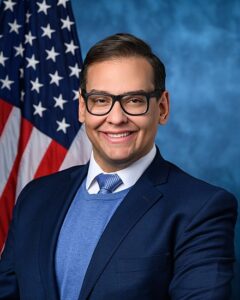
None of this excuses Mr Santos. His lies do matter, but not really for what they reveal about him. That such a person should represent Americans in Congress is a national disgrace. But it is also fitting, because he represents something true and awful, particularly about the Republican Party, yet also about America, a nation lousy with misinformation, also known as deceit.
Ultra-MAGA Republicans don’t believe in democracy. They don’t believe in the truth. They don’t believe in integrity. And as long as they are in power, they will continue to allow candidates like Santos to flood through their recruitment pipeline and muddy our democratic institutions.
It won’t stop at the House. What type of people do you think Steve Bannon has lined up in his “shock troops” to take over our executive agencies, should the GOP take the Presidency in 2024?
George Santos is not an outlier.
In the politics of ultra-MAGA, he is the new norm. And until we defeat the entire movement, morally-bankrupt Russian-tied frauds just like him will continue to walk the halls of the House.
And by the way if you were wondering about the exact words of the First Amendment.
Congress shall make no law respecting an establishment of religion, or prohibiting the free exercise thereof; or abridging the freedom of speech, or of the press; or the right of the people peaceably to assemble, and to petition the Government for a redress of grievances.
Mouse Whisper
Out for my morning scamper, I saw this cable stretched across the footpath. Its purpose was to charge the family EV. There are way more cars than garages in the inner Sydney suburbs in particular and, as can always be predicted, regulation lags behind innovation, even if this innovation derives its inspiration from Heath Robinson. As one source has said, “I think when you’ve got cables going across metal fences, through trees and out to a vehicle, coming off household power, it’s not ideal, it’s not good practice.” Some people are just too polite.



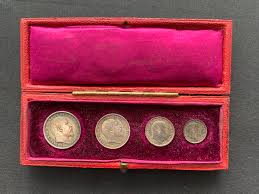

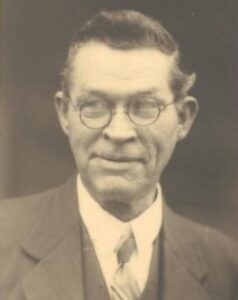
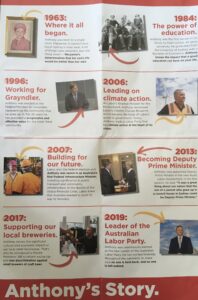 Then the drumroll – the achievement – supporting our craft brewers, no less. Set out in his brochure, he points out that he actually introduced a Private Members Bill to reform excise tax, and in his own words “end discrimination”. Reducing excise on grog is somewhat at odds with his first week of campaigning which concentrated on health matters.
Then the drumroll – the achievement – supporting our craft brewers, no less. Set out in his brochure, he points out that he actually introduced a Private Members Bill to reform excise tax, and in his own words “end discrimination”. Reducing excise on grog is somewhat at odds with his first week of campaigning which concentrated on health matters. When I devised the “Murray to the Mountains” intern training program in North-East Victoria early in the last decade, I planned that each intern would spend 20 weeks in general practice in their first year, and the practices were linked to the local hospital, where they would be confronted with emergencies as well as consolidating their medical, surgical and emergency terms at the local regional hospital. As many of the regional specialists visited these general practice health services, this model enabled the interns to gain even more experience. There were none of these extravagant waiting times to see a doctor and weekends were covered.
When I devised the “Murray to the Mountains” intern training program in North-East Victoria early in the last decade, I planned that each intern would spend 20 weeks in general practice in their first year, and the practices were linked to the local hospital, where they would be confronted with emergencies as well as consolidating their medical, surgical and emergency terms at the local regional hospital. As many of the regional specialists visited these general practice health services, this model enabled the interns to gain even more experience. There were none of these extravagant waiting times to see a doctor and weekends were covered.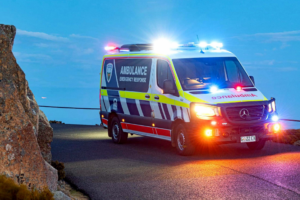 I have experienced medical care in a remote part of Tasmania. I needed the visit from a paramedic, not a doctor, at four in the morning. The paramedic had to come from a neighbouring town. He was quicker in responding than was the case with a similar call in Sydney, where the paramedic came from another suburb. What would a community health service along the ephemeral good-feel media announcement done for me – in a word nothing – at least not at 4.00 am as the paramedic did.
I have experienced medical care in a remote part of Tasmania. I needed the visit from a paramedic, not a doctor, at four in the morning. The paramedic had to come from a neighbouring town. He was quicker in responding than was the case with a similar call in Sydney, where the paramedic came from another suburb. What would a community health service along the ephemeral good-feel media announcement done for me – in a word nothing – at least not at 4.00 am as the paramedic did.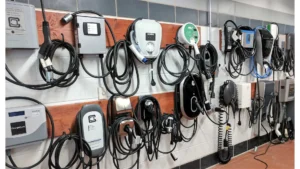
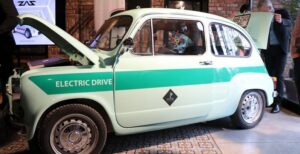 It really is a bit pathetic; building one sporting venue after another when Australia needs to seriously address climate change – and the electrification of our cars, trucks and buses is just one of the priorities to accommodate this need. This is a nation with a trillion-dollar debt, financing an indulgent yet flimsy infrastructure so a few of one’s mates can own expensive jets, buy huge boats to cruise The Mediterranean and when the day is done, après-ski at Aspen.
It really is a bit pathetic; building one sporting venue after another when Australia needs to seriously address climate change – and the electrification of our cars, trucks and buses is just one of the priorities to accommodate this need. This is a nation with a trillion-dollar debt, financing an indulgent yet flimsy infrastructure so a few of one’s mates can own expensive jets, buy huge boats to cruise The Mediterranean and when the day is done, après-ski at Aspen.

